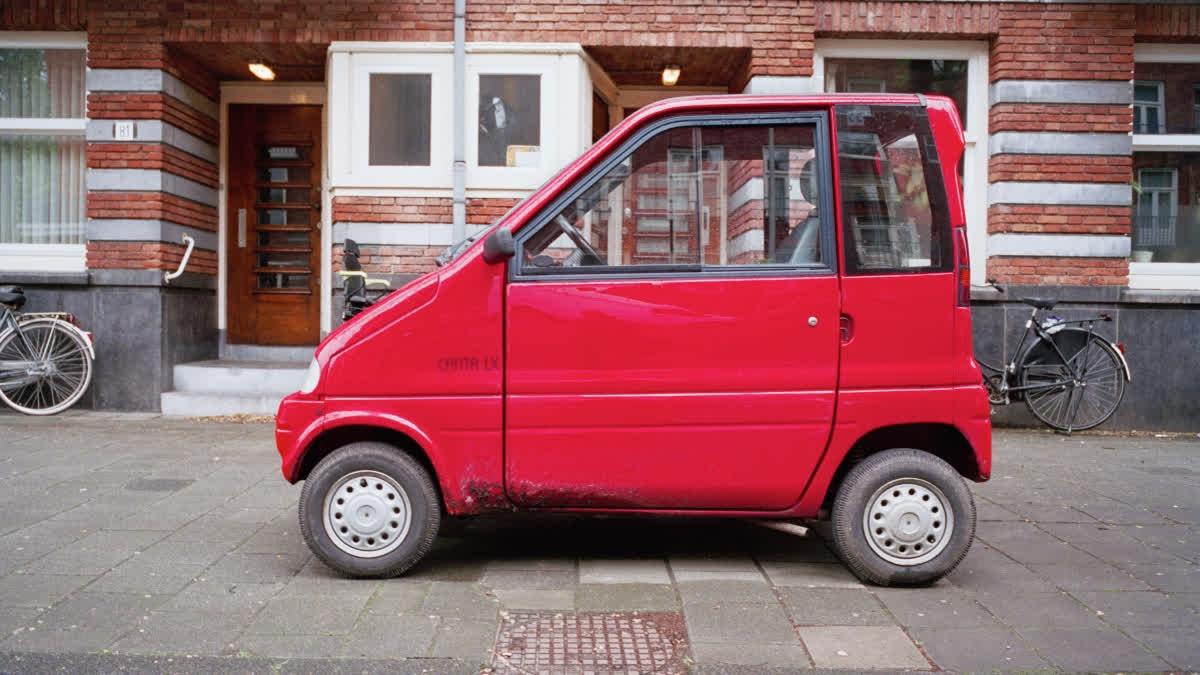Who says size matters? Well, when it comes to cars - it does! Who doesn't want a big luxury car that can accomodate the entire family as well as help us put best foot forward in our social circle. However, it takes a lot to produces a brillian toddler that not only is a status symbol but also cute. Yes, those tiny cars did exist. Here are 11 surprisingly small cars that look comical.
Peel Trident, 90-150kg
This is one the most futuristic car. It is in production since 1960. The initial weight of the car was 90kg, but after a number of innovations, it now weight up to 150 kg. This car can accomodate two people. But you have to fold down to get in. The car has no doors and has 3 wheels. The car is higgly expensive.
Austin Seven:
Made in 1922, Austin Seven is so small that BMW and French outfit Rosengart licenced the design. The car was produced till 1939 and was affectionately called "Baby Austin". The car is often credited as the car that put Britain on wheels. It was one of the first affordable cars and iconic BMW's first car, Dixi was a licensed version of the Austin Seven. It also inspired Japan's Nissan Datsun.
Fiat Topolino:
Fiat was even smaller than Seven, where two people can sit. The car was powered by a tiny side-valve engine. The car was launched in 1936 and continued to function till 1955. The name means "Little Mouse" in Italian, which reflects its adorable design, It was a symbol of affordable luxury post-war Europe.
Volkswagen Beetle:
One of the best selling cars ever. Designed by Ferdinand Porche in the 1930s, Beetle became famous for its round shape and reliability. Peopel loved it in the 1960s and it starred in movies like Herbie. The car had over 21 million buyers and is still loved for its simplicity. The car symbolised counterculture in the 1960s and was also used by Adolf Hitler, who called it "People's Car".
Renault 4CV:
Launched in 1947, 4CV was an affordable transportation in post-WWII France. It sold over a million units in France and abroad. The car was nicknamed "La Motte de Beurre" (a lump of butter) because of its round and smooth shape.
Volvo PV444:
Launched in 1944, the PV444 was Volvo’s first unibody car, meaning it didn’t have a separate frame. It had 4-cylinder engine and was known for its safety features. The sleek, modern look was influenced by American Cars.
Morris Minor:
Morris Minor was launched in 1984 and was the first British car to sell over a million units. The car was designed by Alec Issigonis, who later created the Mini. The car was known for its cute, round shape, it was affordable and practical, which made it favourite among families.
Citroen 2CV:
This car was designed to transport farmers across rough French countryside in 1948. The suspension of the carw as so soft that it could carry a basket of eggs across a plowed field without breaking them. 2CV was nicknamed "Deux Chevaux" (Two Horses) after its modest 2-horsepower engine. Over 3.8 million units were produced of this car, making it a beloved French icon.
Fiat 600 Multipla:
Launched in 1956, the Fiat 600 Multipla was one of the first minivans, designed to seat six passengers despite its small size. The multipla became popular as a family car and taxi in Italy. Its design and versatility made it a hit. It is considered one of the most innovative card of its time.
BMW 700:
Introduced in 1959 to help BMW recover from financial struggles, the car features a rear-engine design which was available as a coupe or convertible. Despite its small size, it was sporty and affordable, which made it poppular in Europe. BMW 700 made the brand establish its reputation for creating fun-to-drive, reliable cars.
Ford Anglia:
This small, affordable, and popular car in the UK was launched in 1959. It had unique reverse-rake rear window, which made it instantly recognisable. It was available in 2-door and 4-door versions. It was popular among families for economical and practical reason. The car gained worldwide fame as the flying car in Harry Potter and the Chamber of Secrets.
Read More:



